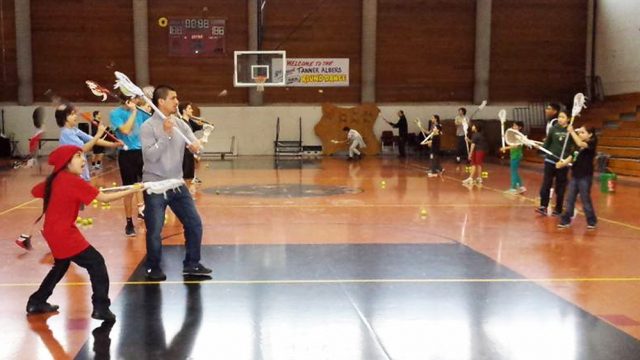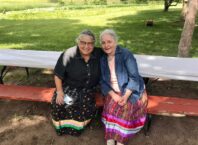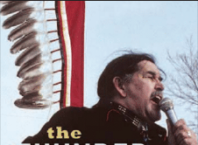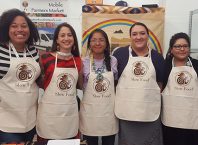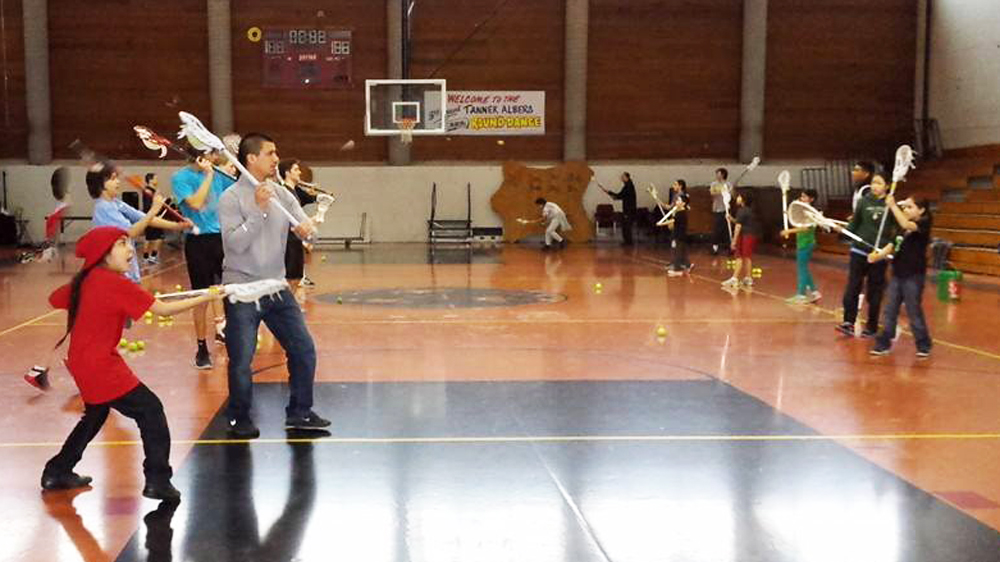 Indigenous Lax kicked off its first
Indigenous Lax kicked off its first
lacrosse clinic on Feb. 15 with special guest speaker and Edmonton
Rush player Jeremy Thompson (Onondaga). He also plays for the
Iroquois Nationals, is a Nike N7 Ambassador and the co-star of a
documentary titled, “The Medicine Game.” He shared his knowledge
and experiences with 30 Native youth representing the Arapaho,
Blackfoot, Dakota, Ho-Chunk, Lakota, Ojibwe, Omaha, Potawatomi and
Yakama nations.
The goal of these introductory
clinics is two-fold: introduce Native youth to the history and
significance the game has to many tribal communities; and to teach
them the foundational skills they need to compete in lacrosse leagues
in the Twin Cities.
“Both Native and non-Native
[people] locally seem to think the sport is for and began with White
Americans from elite communities and schools,” Clinic Director
Shane Thompson (Odawa/Seneca) said. “This is far from the truth.”
Lacrosse is one of the oldest sports
in North America. According to oral history passed on to Jeremy
Thompson, “lacrosse has been played for thousands of years and the
first game was played by the animals.” He went on to elaborate that
the game between the animals relates to today by acknowledging that
every player has a role regardless of speed, strength or size.
“It’s a collective learning
journey because I myself don’t know the whole history of it locally,
but somebody does and we’re trying to get those people to talk to our
kids about it and offer a different perspective,” Shane Thompson
said.
To help educate youth about the
history of lacrosse, Shane Thompson plans to bring in a different
guest speaker each week. In addition to Jeremy Thompson, Dan Ninham
(Oneida) from Minnesota Ojibwe Lacrosse offered his perspectives
about the traditional game to the group at the Feb. 23 clinic. Future
presenters include Cherokee author and lacrosse enthusiast Art
Coulson and Ojibwe artist Robert DesJarlait.
In addition to introducing youth to
the historical and cultural significance of the sport, Indigenous Lax
aims to increase wellness in the community by promoting fitness.
“We’re hoping that it’s another
motivator to get kids moving in the fight against diabetes and
obesity,” Shane Thompson said. He started the clinics as part of
his senior year internship through the University of Minnesota’s
Recreation, Park and Leisure Studies program.
Indigenous Lax is funded by the
Circle of Generations program at the Minneapolis American Indian
Center and is supported and staffed by Homegrown Lacrosse. The
program is still looking to partner with organizations in the Native
community to reach out to youth across the Twin Cities.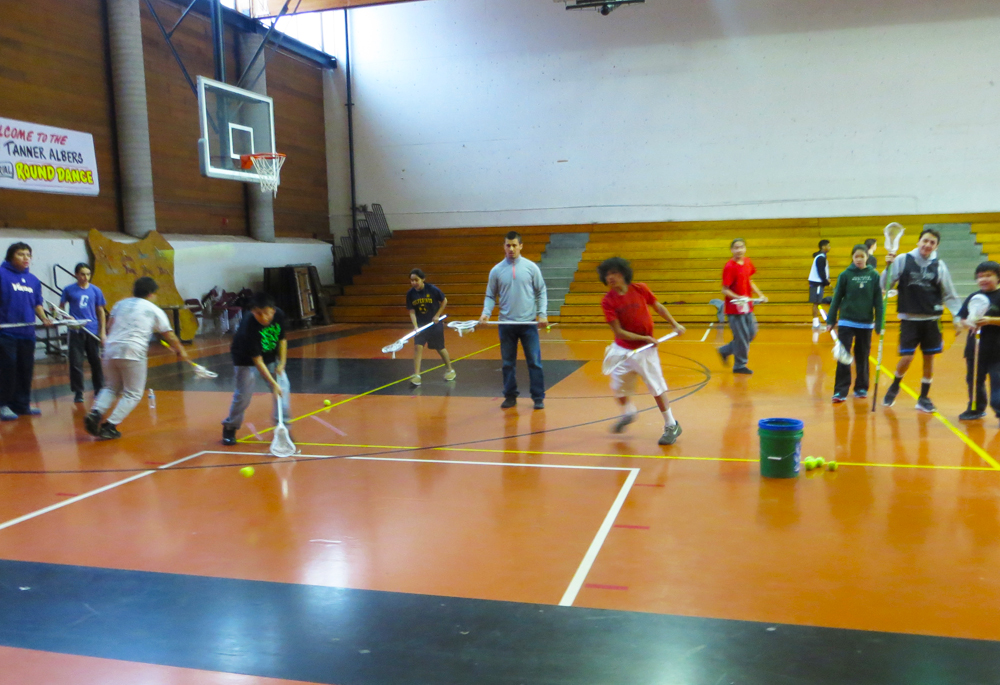
“This is a community
collaboration,” Shane Thompson said. “Any organization that wants
to be involved can be.”
The clinics will be held every
Saturday through March 15 from 11 a.m. to 1:30 p.m. at the
Minneapolis American Indian Center. Indigenous Lax is open to youth
from third to eighth grades, is free of charge and includes lunch and
transportation. To register, parents can visit
www.homegrownlacrosse.org/indigenouslax or contact Shane Thompson
directly at shane@homegrownlacrosse.org or 612-708-0699.
He hopes these introductory clinics
will engage and inspire enough Native youth to field teams for local
Parks and Recreation Board leagues, which run from April 12 to May
17. “We want to kids to take away the fact that their people were
the originators of the game and that there’s a deep history
involved,” he said. “We’re trying to get them to realize the
importance of the game, how it was a gift from the Creator to be
played for his enjoyment."


